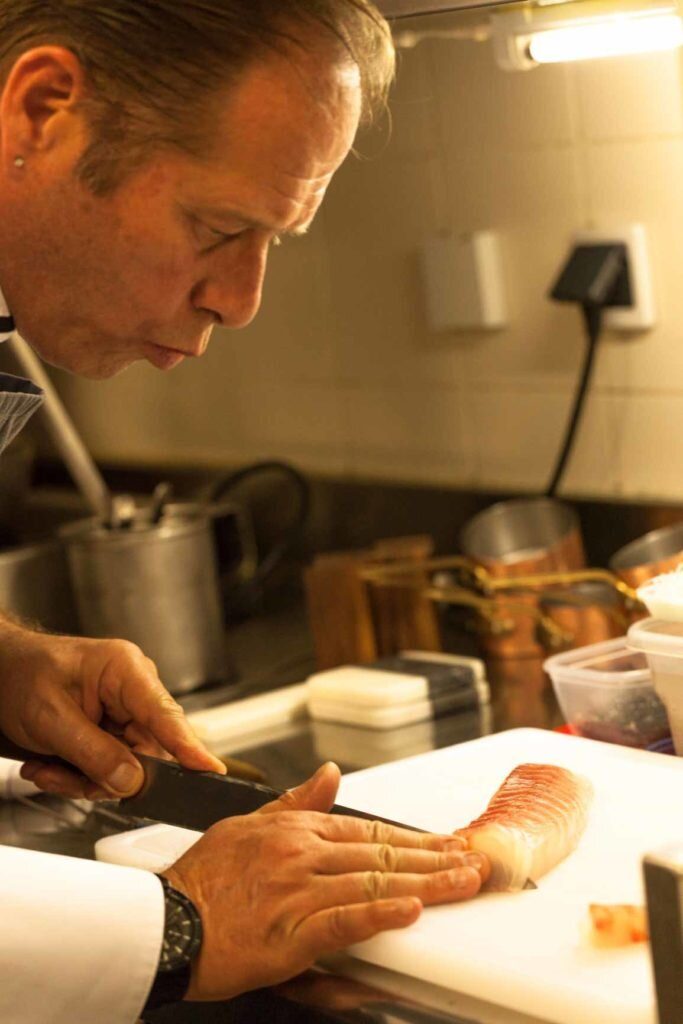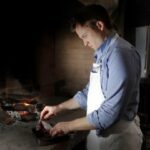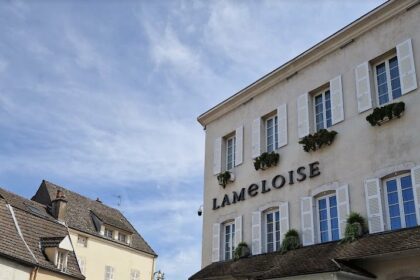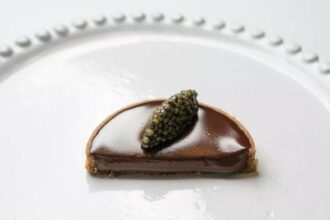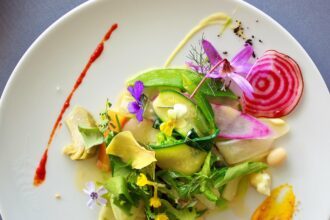I met chef David Kinch in late 1990s, but I have been in some of the restaurants in which he was at the helm earlier than that. He opened Manresa in Los Gatos in 2002, and since then my wife and I have visited Manresa about 20 times. Each visit to Manresa is preceded by high expectations, and unlike many other Michelin three star restaurants, after the meal is over, I look forward to my next visit as my expectations have always been fulfilled.
Dishes change seasonally and according to Kinch’s inspiration from his frequent gastronomic trips to Europe and Japan. Unlike many leading chefs, Kinch is not shy about praising other chefs’ creations. He gets equally excited when encountering a technically sophisticated novel dish as when he encounters the perfect egg, persimmon or trenetto al pesto. His open mindedness and impressive taste buds are reflected in his cuisine. (Kinch does not pretend to be a connoisseur of wine, but actually he is.) Overall his cuisine tastes really good, like the best examples of comfort food, but is also well thought out and complex. It is a product oriented cuisine, but is certainly not “farm to table” nor “too cerebral” like, say, Mugaritz. I always remember what I have tasted at Manresa, and I am writing this review several months after my meal there in end-December.
Other than the Manresa dishes, I always remember homemade breads and the yellow-colored excellent salted butter from Normandy cows at Manresa. Their salted caramels that the restaurant offers as gift at the end of the meal are also my favorite caramels anywhere.
Amuses change, but there are two which are staples: red pepper jelly and olive madeleine. In our visit he also offered a tuile-like biscuit with seeds, nuts and goat cheese. They are all good and appropriate at the beginning of a rich multi-course meal.
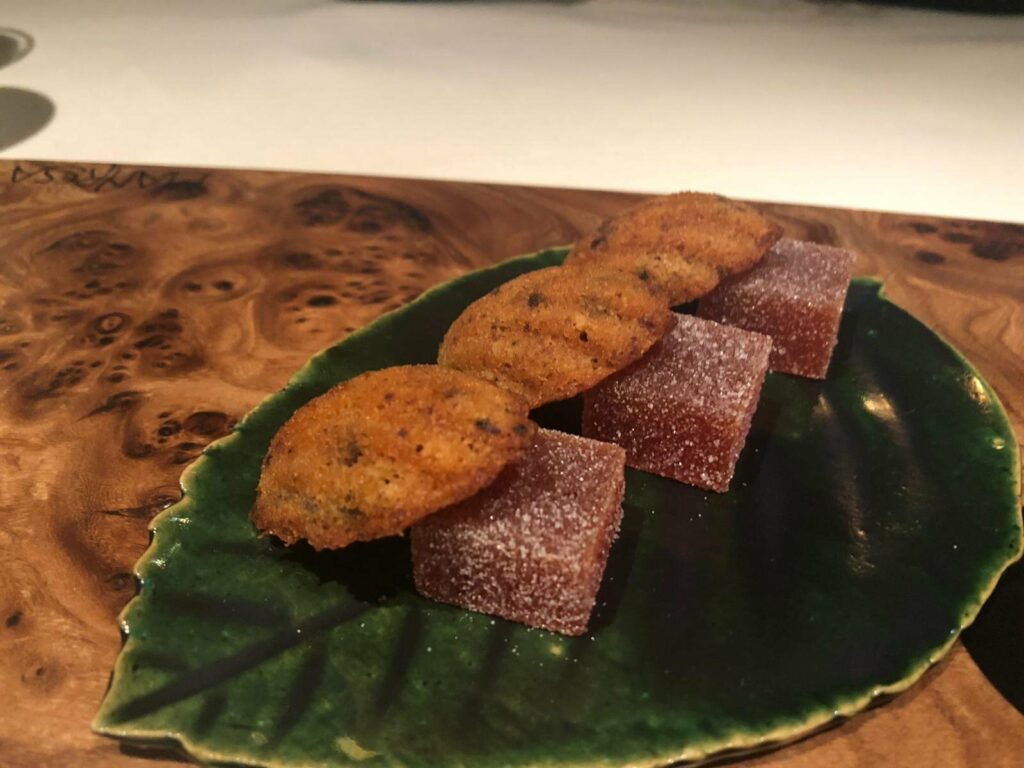
The first course, or the second amuse, was an oyster. It was flavored by koji oil and decorated with thinly sliced turnips, an oyster leaf, and Californian oscietra caviar. A good combination, the briny oyster always works with sweet fresh sturgeon caviar, and the koji oil added a dimension and extra depth that may be called an umami taste.
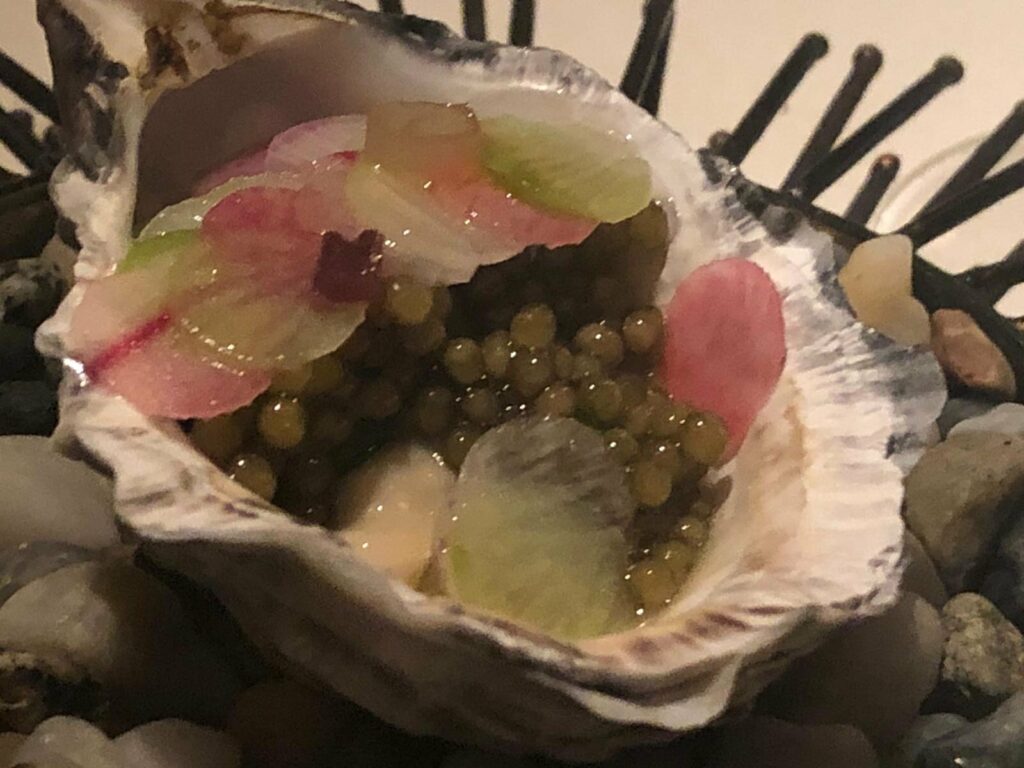
In retrospect, the second course was the one of which I am most critical: the Hokkaido sea urchin bavarois. It was served with a consommé of sea lettuce, kombu, koji oil and garum made from sea urchin. The umami component here compromised the natural sweetness of sea urchin. As can be seen from the photo below, the dish was presented beautifully, but the extra sophistication did not improve the natural taste. My reference point for sea urchins is to eat them in their shell, and both Asturias and Galicia provide ultimate examples of the pristine and incomparable taste of this majestic thorny crustacean.
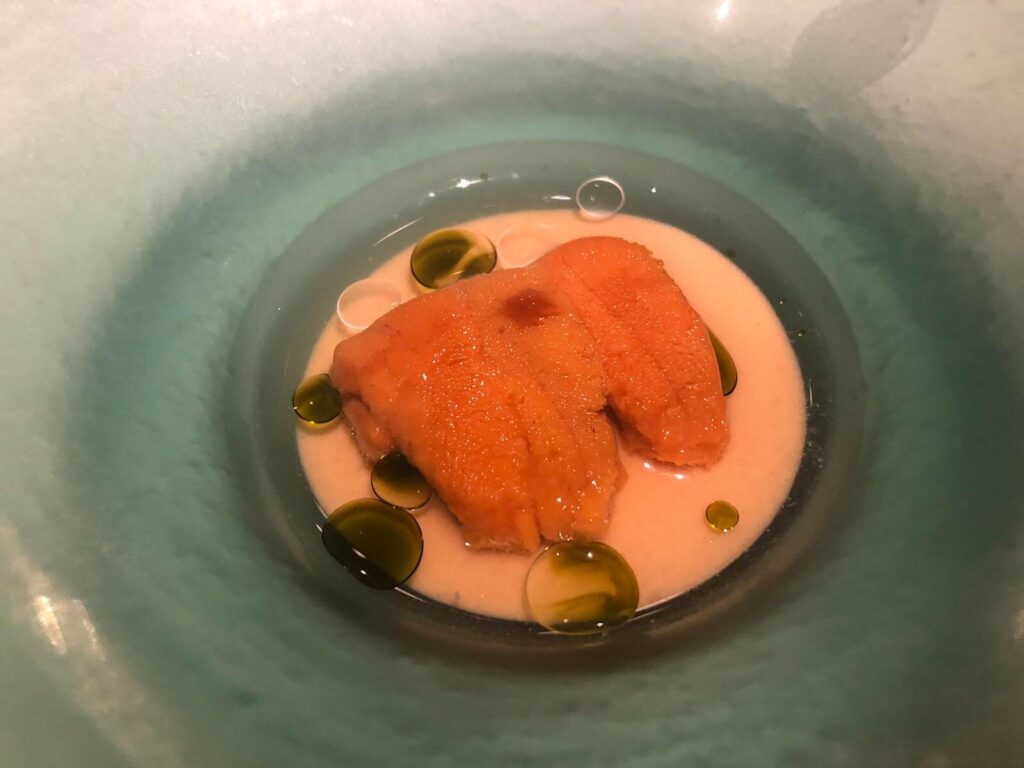
The next course was a masterpiece. It is called “Into The Vegetable Garden”. The taste does justice to the metaphor. The quality and originality of the “vegetable garden” was due less to the nature of its components than the ways in which the components were calibrated and bound in such a way as to create edible harmony and irresistible perfume. As far as we could tell, Brussels sprouts, beets, apples, some flowers such as Marigold, various herbs, bee pollen, citrus fruits, etc. were all bound together by nutty and citrusy (Kalamansi?) oils without dominating one another. Everything tasted fresh and uplifting. Bitter, savory, sweet and acidic elements happily co-existed, and the contrast in textures, with crisp Brussels sprouts leaves and some de-hydrated elements, was designed to enhance the taste rather than to look creative for its own sake. Of all the dishes inspired by Bras’ masterpiece “gargouillou”, this was the most impressive.
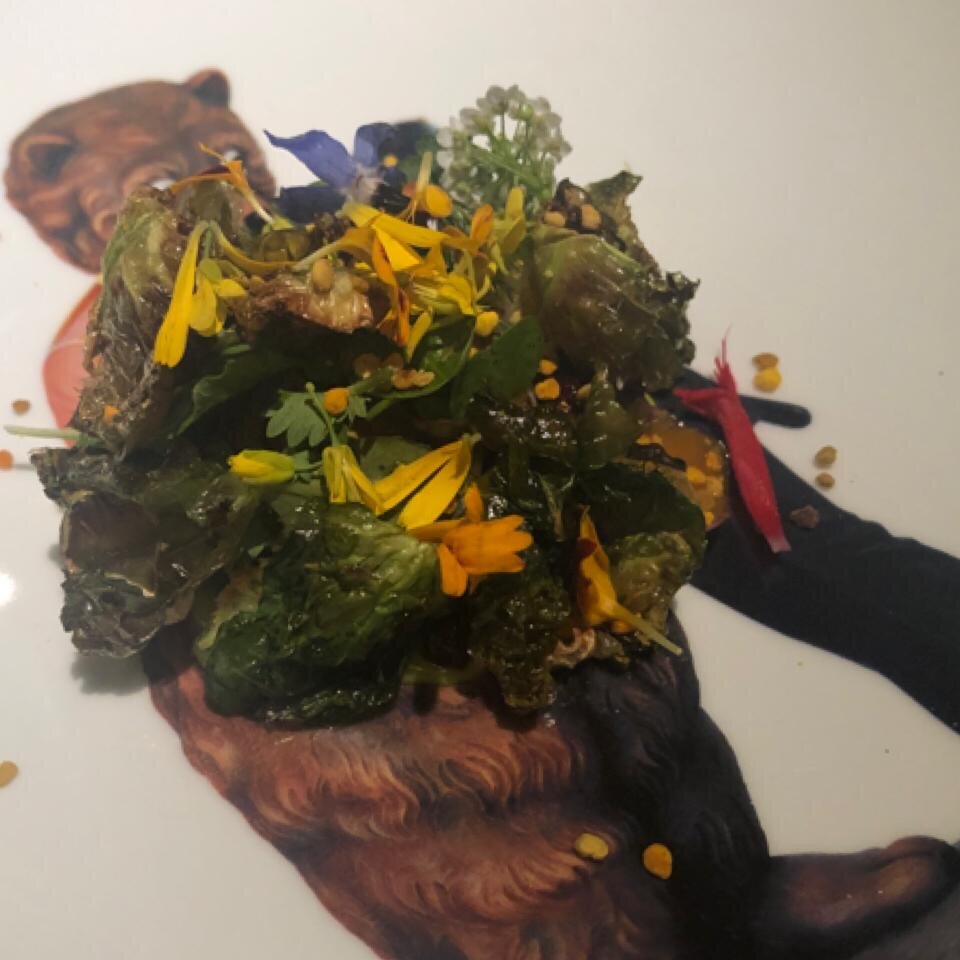
Next came an original and very satisfactory “gourmand” course. A very rich, Gouda-like Noord Hollander cheese fonduta, caramelized whey, Wagyu bresaola, Cauliflower mushroom, and a slice of Perigord truffle were arranged in layers. The most apt adjective for this dish is, as my 17 years of daughter uttered the term, “yummy”! I congratulate the chef for his self-confidence to concoct a dish which does not look “photogenic” on Instagram, but tastes good.
An equally intense shellfish “cioppino” followed. This was a seafood soup of abalone, Dungeness crab and Geoduck clams bound by a strong seafood jelly. I have no objection to this dish, but Uliassi’s “brodetto di pesce” remains my reference point for fish-shellfish soup concoctions, followed by Passedat’s take on bouillabaisse. At any rate, the intense dark flavors of the cioppino required a balancing element, and the 2008 Coche Dury Puligny Enseigneres proved most appropriate with its inner core of persistent agrumes-citrus and minerals.
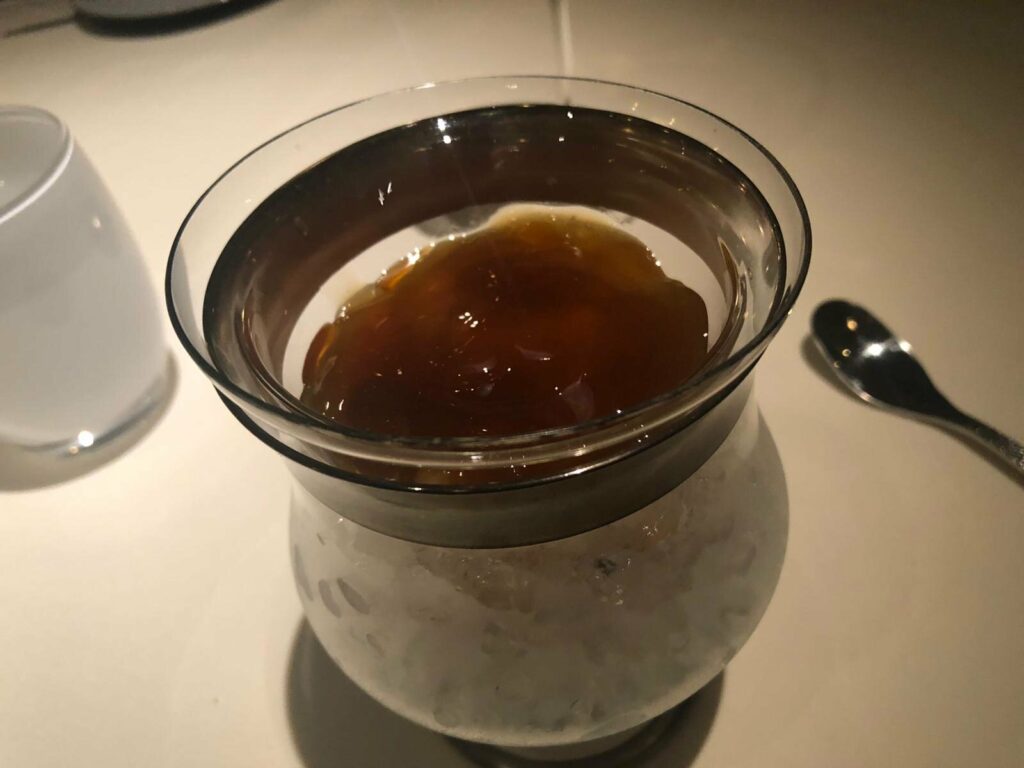
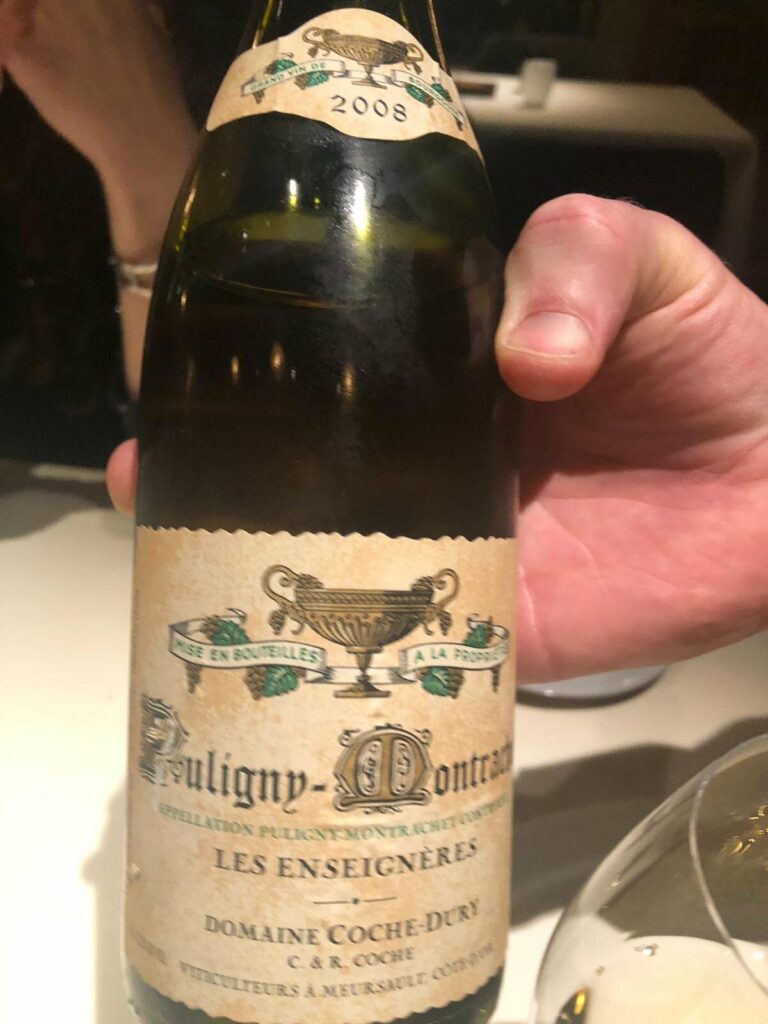
Next, we were shown a firm and aromatic Alba truffle. 2019 was a very good year for “pico magnatum” starting in mid-November and lasting until late December. The truffle was generously sliced on a large bowl filled with Koshihikari rice and very fresh and sweet tasting Nantucket Bay scallops. If there can be a happy meeting point between everyday comfort food and high gastronomy, this must be it! This excellent and very original concoction should make us re-think the limits of the now very trendy post-Noma locovorism. Here you have three ingredients: scallops from the East Coast of the USA, truffles from Italy, and Japanese rice. All ingredients, as well as the “fusion”, are perfect. I agree that local ingredients should be supported and used as much as possible, provided that they are good, but even in lucky California, no chef can achieve greatness by relying solely on local ingredients.
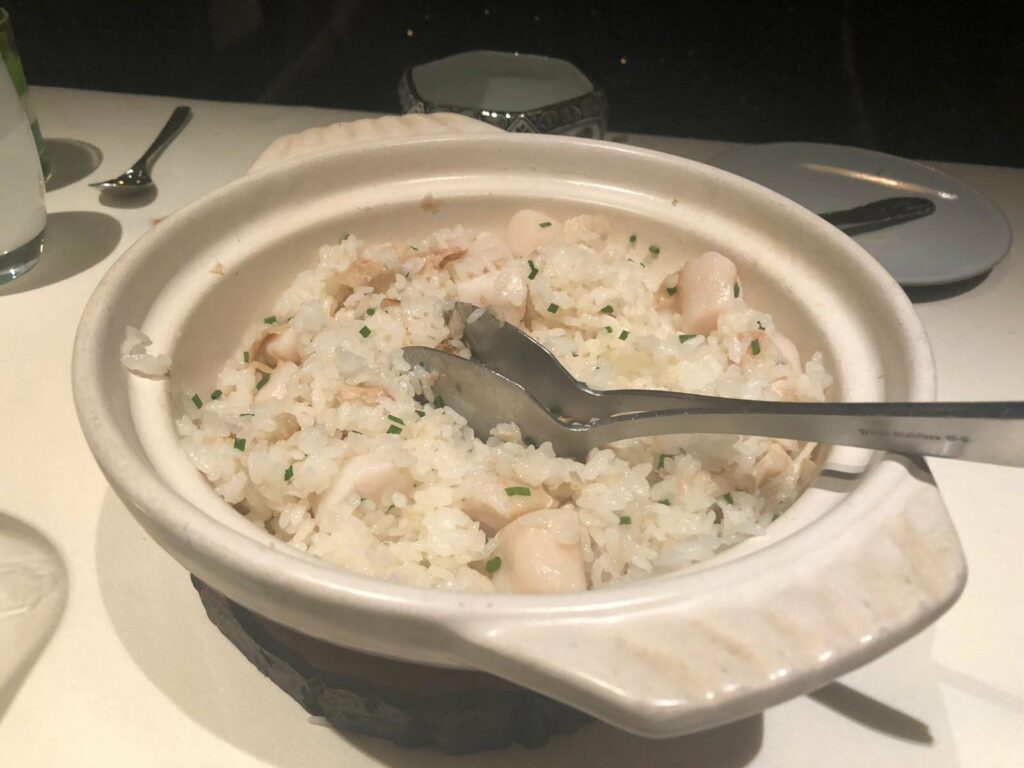
Japanese Kinmedai, golden eye red snapper filet, was cooked precisely and served with fermented and roasted cabbage with a crab sauce enriched by sake lees. The fish was nice, soft and flaky, but I was more impressed by the fermented cabbage. I liked Kinch’s version of cabbage more than Nico Romito’s famous version at the three star Reale in Castel di Sangro.
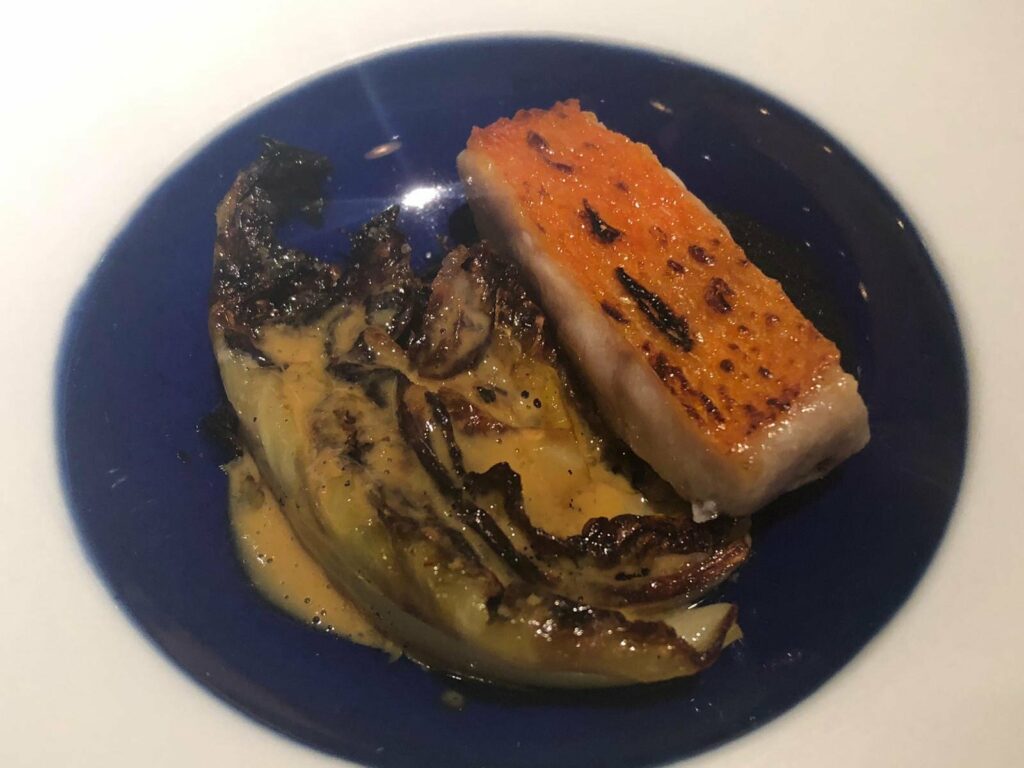
The pigeon agnoletti was also memorable. The dish had depth, but was not heavy. The chef used all of the offals of the pigeon, such as the liver, heart, and kidney, and turned them into a paste by mixing them with foie gras, cream, and stale bread. He chopped up the breast, seasoned with thyme and marjoram, and combined it with the paste before stuffing the agnolotti with the mixture. The agnolotti was served on top of persimmon and chestnut purees and sprinkled with reggiano on top. Persimmon and chestnuts counter-balanced the richness by adding sweetness and acidity. The quality of the pigeon which came from a small local farm was top, as I could attest based on the legs served alongside the pasta. Had the dough of the agnolotti been a tad thinner, I would have called this very good dish a “masterpiece” pasta.
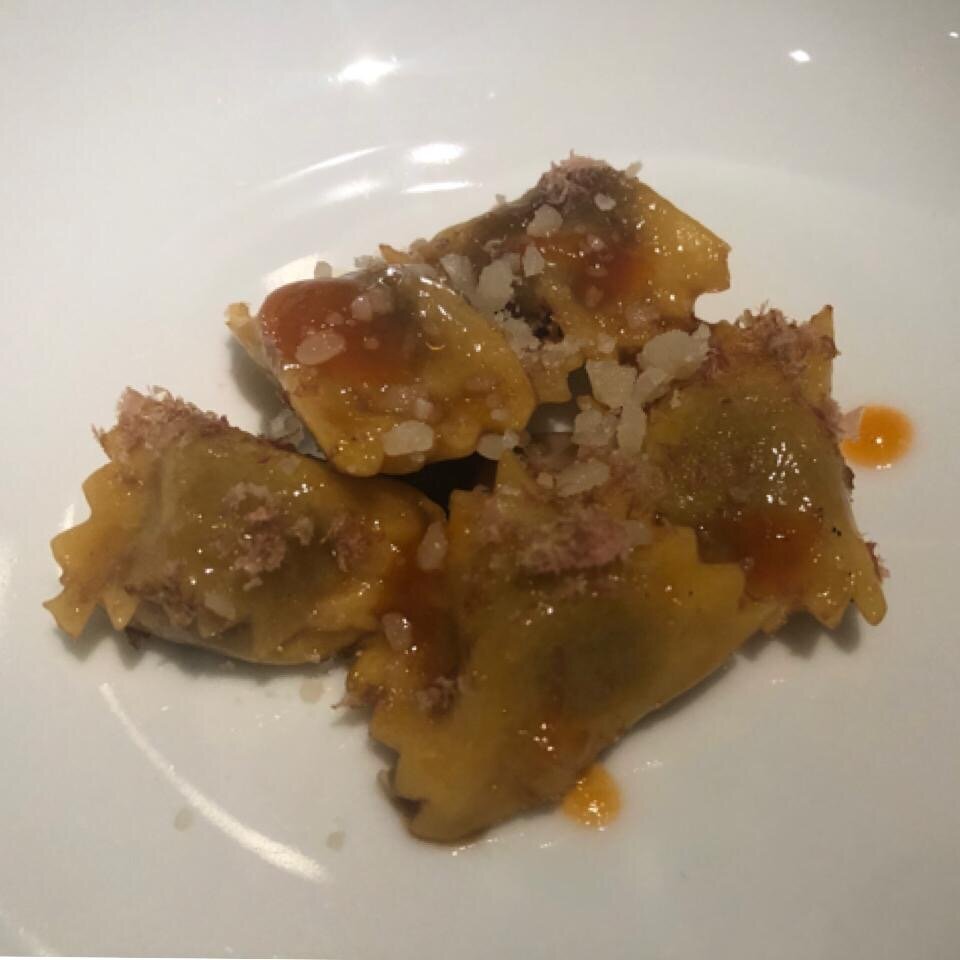
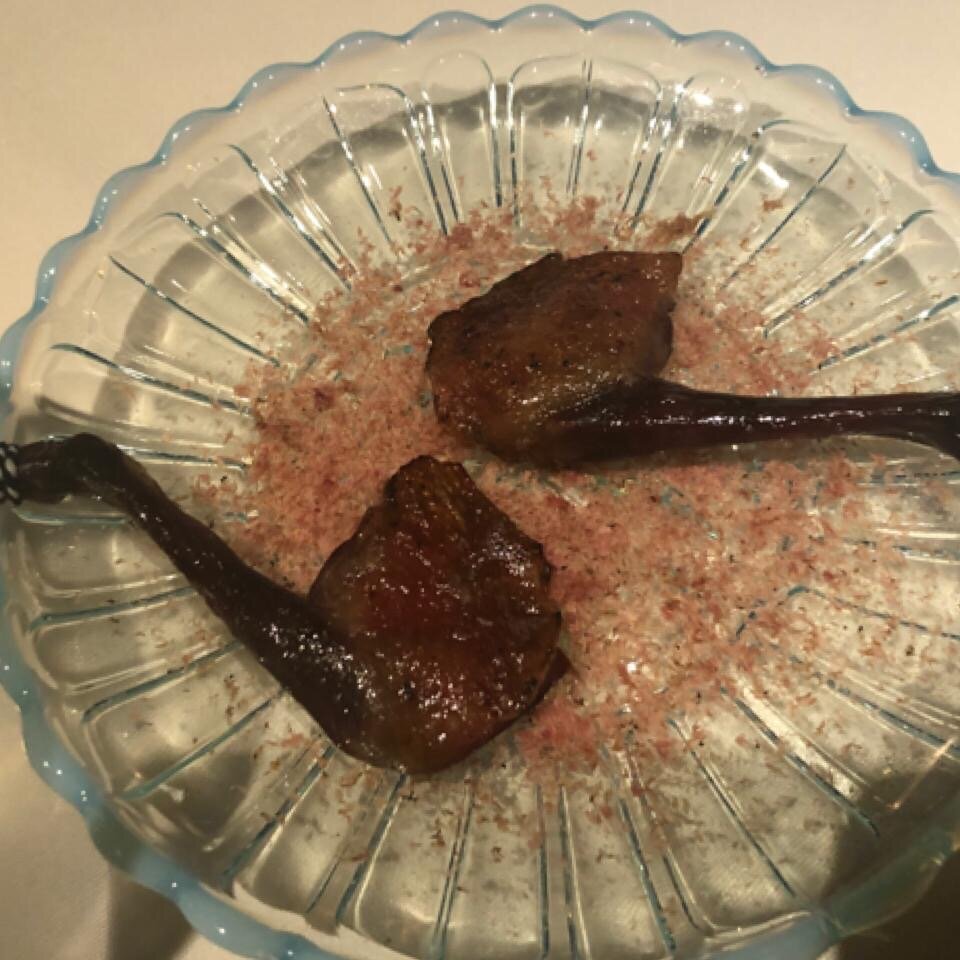
The final savory course was a trio of beef: sweetbreads and tongue from the Four Story Hill Farm in Pennsylvania and A5 Japanese Wagyu. A morel mushroom stuffed with Jamon Iberico was also rich and meaty. Caramelized onions and Dijon mustard worked well with the tongue, in addition to the classic demi-glace. The sweetbreads were crunchy outside and tender inside. This was a very successful last savory course where all of the complimentary elements were cooked to perfection.
We paired the last two courses with 2013 Barolo Bussia from Fantino
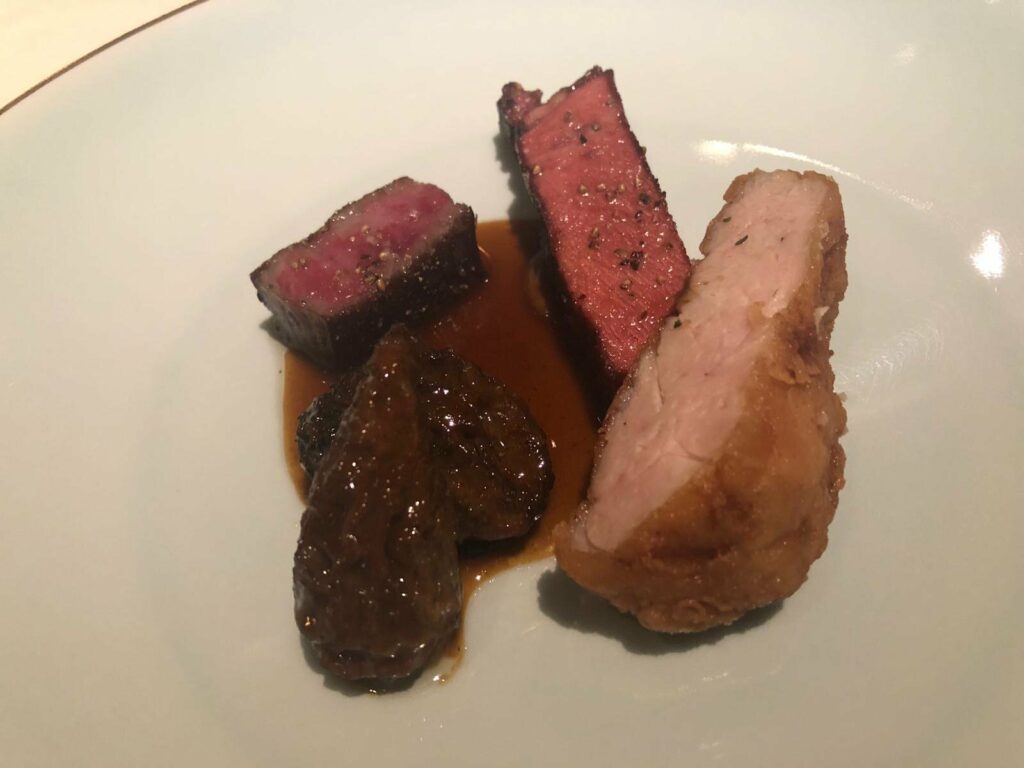
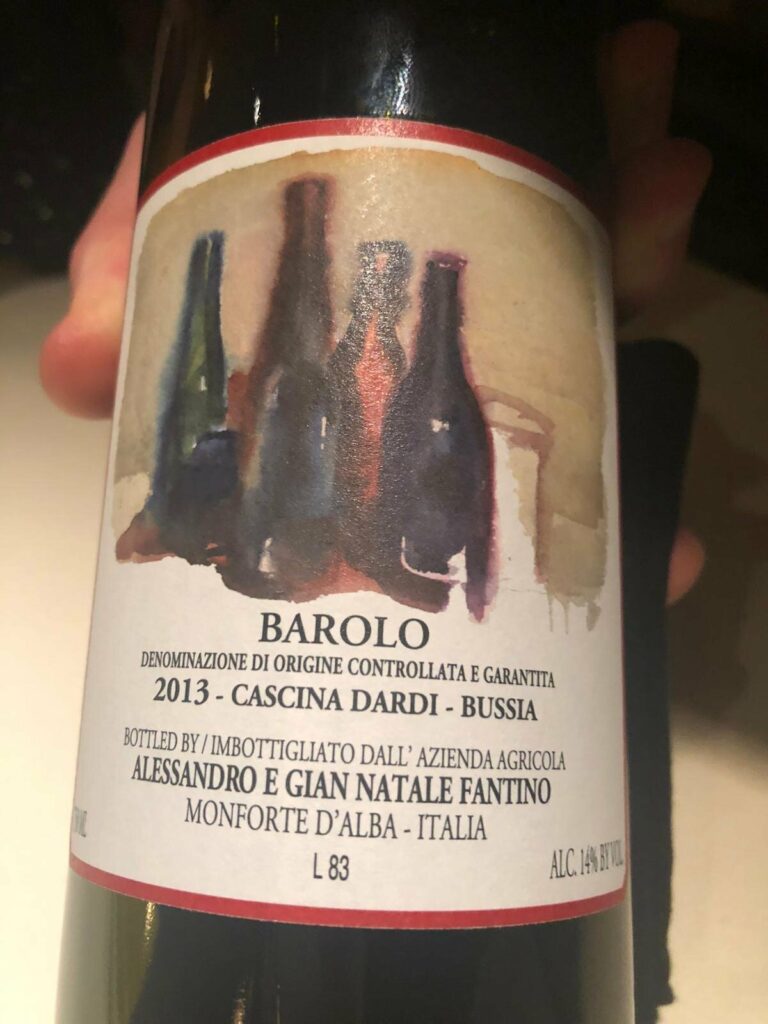
The pre-dessert of almond granite with bitter lemon turned out to be a good choice to prepare us for the grand finale. That was persimmon pudding and aged persimmon and vanilla ice cream. This turned out to be not only the most memorable dessert at Manresa to date, but one of the two or three best I have tasted anywhere in 2019. Bravo to the dessert chef!
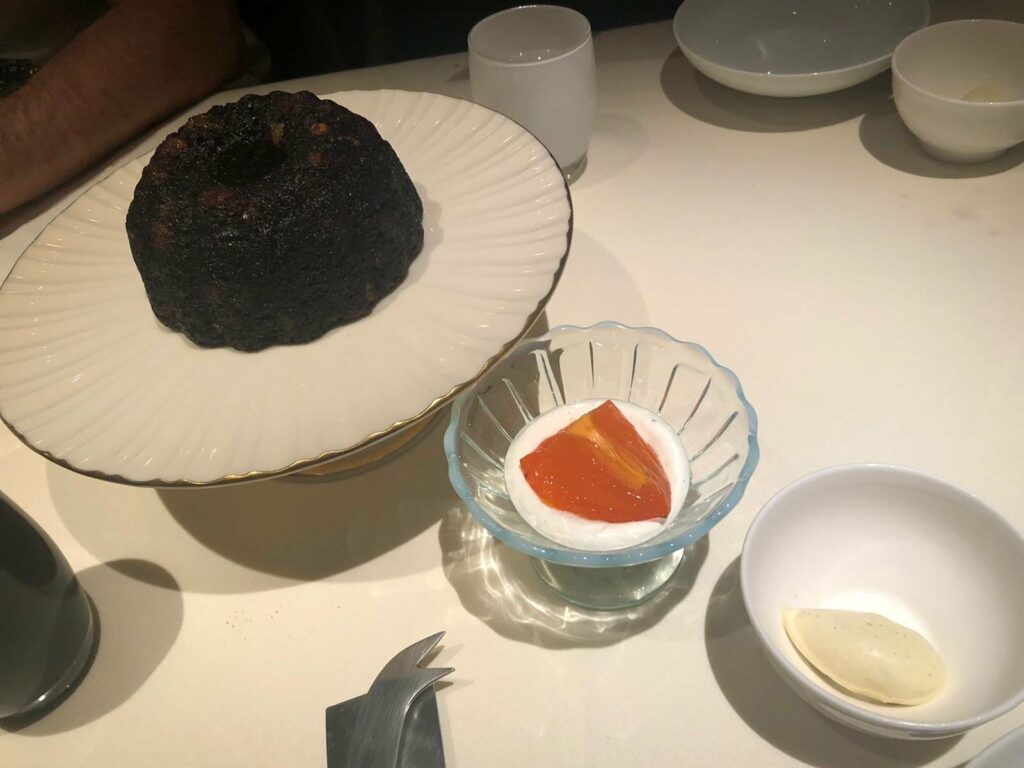
In my opinion Manresa and Brooklyn Fare in New York are the two best restaurants in the States right now (I would also include Joshua Skenes, but he has not been at the helm in Saison for a while now) .
Thumbnail Photo: Jilly Bennett
